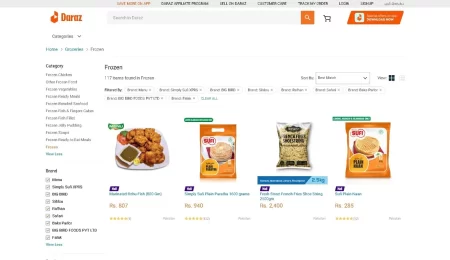Best Practices for Buying Online: The Art of Online Shopping
Best Practices for Buying Online: In today’s digital age, online shopping has become increasingly popular, offering convenience and a wide range of products at our fingertips. However, with the abundance of online marketplaces, it’s crucial to adopt best practices to ensure a safe and satisfactory buying experience. This article aims to provide you with essential guidelines for making informed and secure online purchases.
2. Research and Compare Prices
Before making any online purchase, it’s advisable to conduct thorough research and compare prices across different platforms. By doing so, you can find the best deals and avoid overspending. Take advantage of price comparison websites and tools to quickly compare prices from various online retailers.
3. Read Product Reviews
Product reviews offer valuable insights into the quality, performance, and user experience of a particular item. Prior to buying online, make sure to read reviews from verified buyers. Look for detailed and genuine feedback that can help you make an informed decision about the product’s suitability for your needs.
4. Check Seller’s Reputation
When purchasing from online marketplaces or individual sellers, it’s essential to assess their reputation. Check ratings, reviews, and feedback provided by previous customers. Look for reputable sellers with a track record of positive customer experiences and prompt responses to queries or issues.
5. Verify Website Security
Protecting your personal and financial information is crucial when shopping online. Before entering any sensitive data, ensure that the website you’re on has proper security measures in place. Look for the padlock symbol in the address bar, indicating a secure connection (HTTPS). Avoid sharing personal information on unsecured websites.
6. Look for Secure Payment Options
Always prioritize secure payment options when making online purchases. Opt for reputable payment gateways or services that offer buyer protection. Avoid sharing credit card details directly with unfamiliar or unverified websites. Consider using digital wallets or payment platforms that provide an extra layer of security.
7. Use Strong and Unique Passwords
Creating strong and unique passwords for your online accounts is essential to protect your personal information. Avoid using easily guessable passwords and consider using a password manager to securely store and generate complex passwords. Regularly update your passwords to minimize the risk of unauthorized access.
8. Be Cautious with Personal Data
While making online purchases, be cautious about sharing unnecessary personal information. Legitimate sellers usually require only essential details for shipping and payment purposes. Avoid providing excessive personal data, especially if it seems unrelated to the purchase.
9. Check Return and Refund Policies
Before making a purchase, familiarize yourself with the return and refund policies of the online retailer. Understand the conditions and procedures for returning or exchanging products, as well as the timeframe for initiating a return. This knowledge can save you from potential inconvenience or disappointment if you encounter issues with your purchase.
10. Consider Shipping and Delivery
Shipping and delivery can greatly impact your overall online shopping experience. When buying online, consider the estimated shipping time and the delivery options available. Some retailers may offer expedited shipping for an additional cost, while others provide free shipping for orders above a certain threshold. Take into account your specific needs and preferences when choosing the most suitable shipping method.
11. Look for Customer Support
Reliable customer support is crucial when buying online, especially if you have questions, concerns, or encounter issues with your purchase. Prioritize online retailers that offer accessible and responsive customer support channels, such as live chat, email, or a dedicated helpline. Prompt and helpful assistance can enhance your overall shopping experience.
12. Check for Discounts and Deals
Before finalizing your online purchase, take the time to search for discounts, deals, and promotional offers. Many online retailers provide discounts or coupon codes that can help you save money. Explore websites specializing in aggregating such offers or subscribe to newsletters to stay updated on the latest deals.
13. Compare Shipping Costs
In addition to considering the shipping options, it’s essential to compare the shipping costs across different online retailers. Sometimes, a seemingly lower-priced item can end up being more expensive when you factor in high shipping fees. Evaluate the total cost, including shipping, to ensure you’re getting the best value for your money.
14. Consider Customer Feedback
Informed decisions can be made by considering the experiences of other customers. Look for online platforms where customers share their feedback and experiences with specific sellers or products. Consider both positive and negative reviews to gain a balanced perspective and make an educated choice.
Best Practices for Buying Online!



Leave a Comment